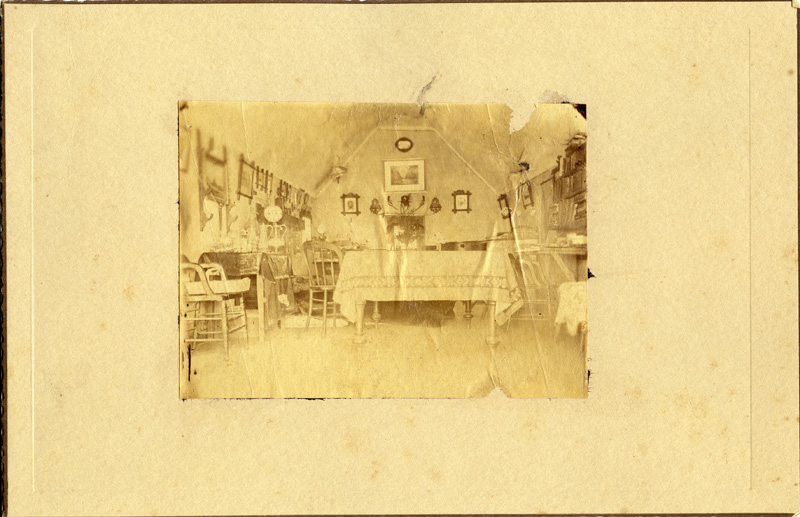
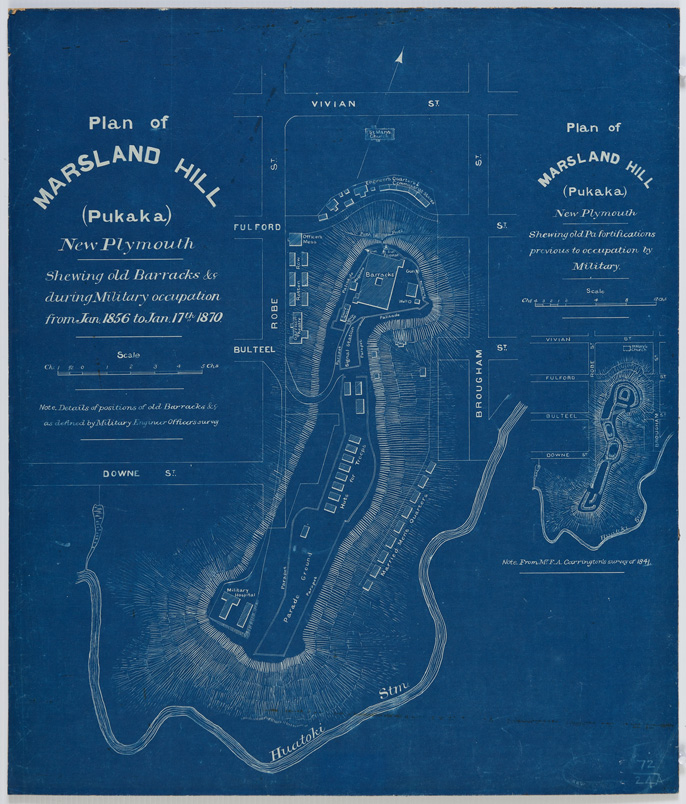
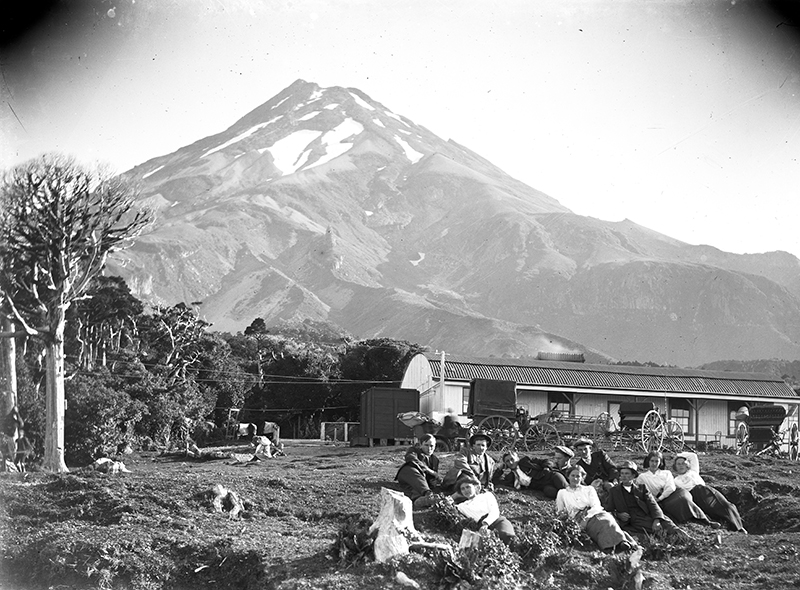
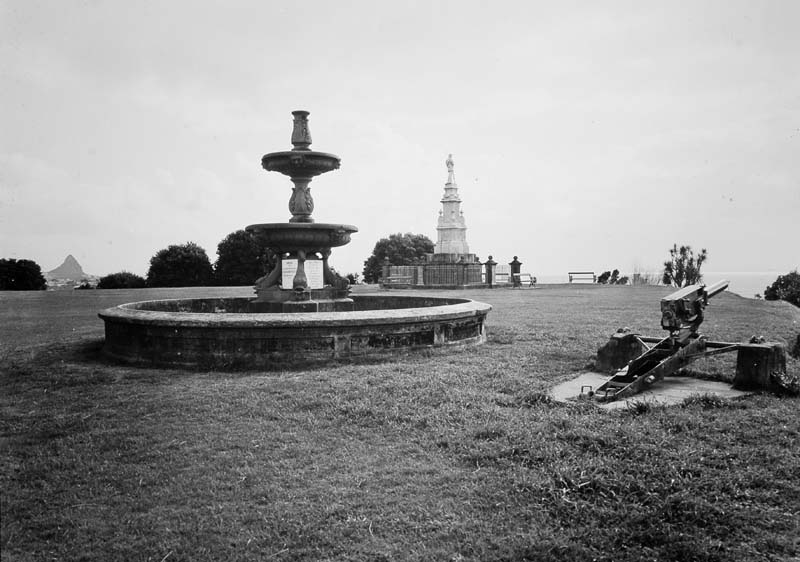
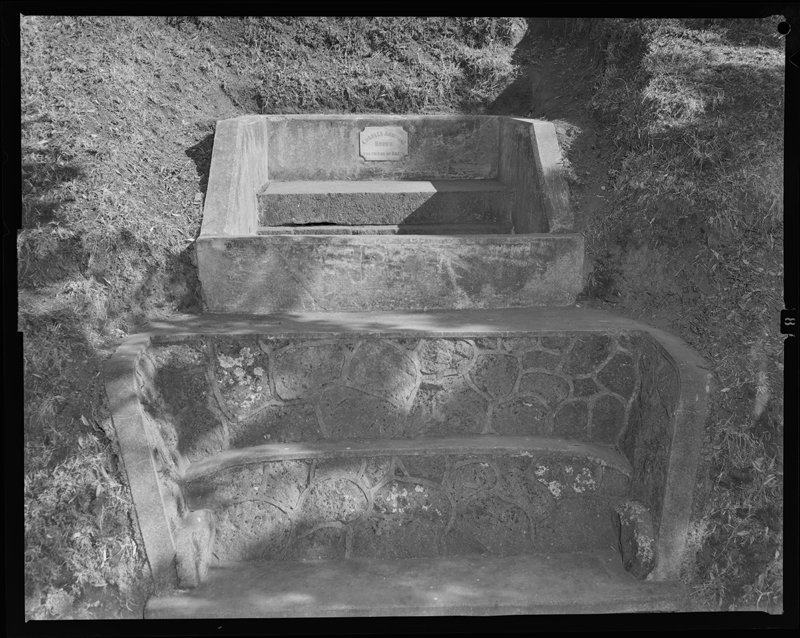
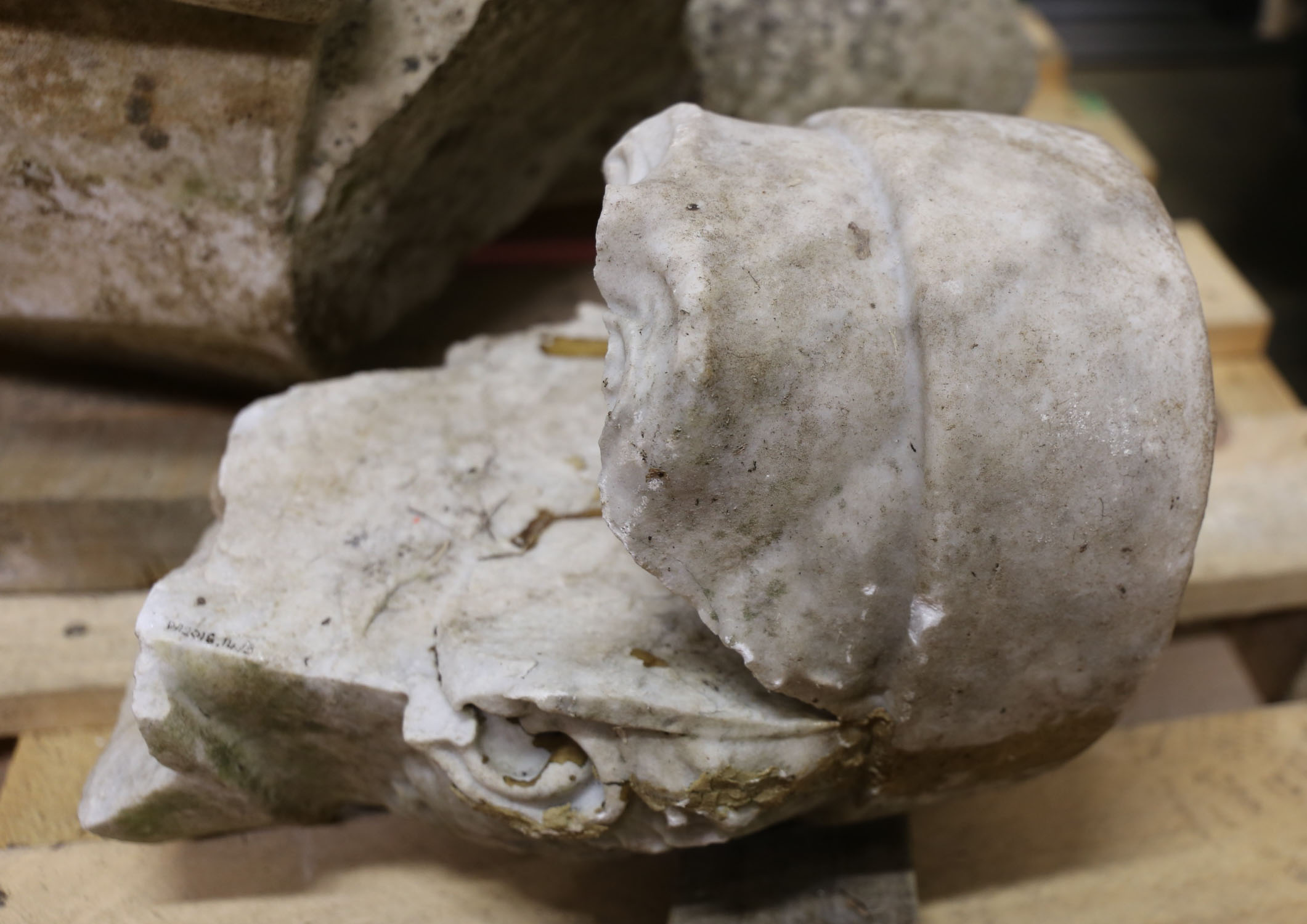
Originally the hill was a conical shape, a mini-mimic of Mount Taranaki standing behind. It was known to Māori as Pukaka pā. The first Māori settlers levelled the top and dug terraces and kumara pits in the side.
Historian and surveyor S.Percy Smith said the pā was originally built by a section of the Taranaki tribe the Ngā Potiki-taua, who had conquered the district from the original Te Ātiawa owners in the 18th Century. The latter tribe reclaimed the whole of the lost territory and expelled the Ngā Potiki-taua later that century.
By the time the first European settlers arrived Pukaka had been abandoned for many years. When Frederic and Octavius Carrington, the surveyors for the New Plymouth Company, began the survey of New Plymouth in 1841, Pukaka pā was covered with a beautiful growth of karaka, rewarewa, rangiora, kohekohe and similar native trees. Nestled below the hill, where the Taranaki Cathedral Church of St Mary now stands, was a magnificent grove of karaka trees.
The meaning of Pukaka is uncertain – but S. Percy Smith attributes it to “a bunch of parrots, when they are tied together by the necks for carrying”. At the request of Captain Liardet, the first resident agent of the New Plymouth Company, Frederic Carrington named the hill Marsland, after a good friend of Liardet's in England.
The Carrington brothers set the back of Marsland Hill aside for a public cemetery, but it was destined to play a bigger part in New Plymouth's history. Events soon changed the face of Marsland Hill.
The countdown to the Taranaki Wars began over the summer of 1854-55 when argument broke out between the Puketapu hapū over land. The authorities finally bowed to pressure from nervous settlers, who felt in danger, and a detachment of British troops marched into New Plymouth to help calm tensions.
Marsland Hill was chosen as the site for barracks for the soldiers and by March 1856 the hill had a new look. Trees were removed and 15 metres chopped off its crest to provide a level site for the eight prefabricated wrought-iron barracks that arrived from Australia.
By the start of the Taranaki Wars in March 1860, Marsland Hill was the heart of a trench system that encircled the centre of the town and a naval camp commanding the surfboat landing place at Puke Ariki. The hill had a parade ground, hospital, fire brigade, powder magazine, accommodation for troops, its own water supply and garrison theatre, all surrounded by a sturdy wall of wood.
Marsland Hill was the centre of a signalling system used by the military through the First Taranaki War and part of the Second War. Four canvas covered wicker balls were raised or lowered on yards of a signalling mast. The signals could be seen from the Waitara river in the north through to the St George's redoubt at the Tātaraimaka block to the south. Soldiers from the Barracks brought much needed income to the townspeople of New Plymouth - the local watering holes especially doing brisk trade.
During the First Taranaki War the Marsland Hill Barracks were a place of refuge for the people of New Plymouth. If the town was threatened by an attack from Māori, two large guns were to be fired from the barracks on the hill. At this signal, like a hen gathering her chickens, militia and volunteers from three kilometres around were to rush into town, and women and children were to hurry to the barracks, church and chapels, ready for an attack.
In the book New Zealand Settlers and Soldiers, written in 1860, Reverend Thomas Gilbert described his wife's experience on one such occasion. "My wife's apartments were just opposite and below the barracks. She saw the smoke of the cannon, and heard the dreadful boom of the report and immediately a stream of women and children were to be seen hurrying up the steep path into the barracks, for a full ten minutes some women, with a child under each arm, without their hat, bonnet or shawl – some with a bundle hastily thrown together, and many seemed utterly bewildered, amidst the confusion and noise of women crying, children screaming and the eager, anxious questions to know what it was all about. Can you imagine the dire confusion by all this? The scene has been described to me as painful and heart rending in the extreme."
The town was held in such a state of nervous tension that ‘wolf’ was often cried, and the gun fired many times. But the town itself was never attacked.
When the military cut into the top of the hill, the diggers came across a wooden coffin, with no gravestone, containing a skeleton that still had a clump of fair hair attached to its scalp. The coffin contained a number of naval buttons, suggesting the person had a naval background. But no-one could name the fair-haired man. It wasn't even noted where he was subsequently reburied.
Over the years rumour has abounded as to who may have lain in the coffin. Some historians have surmised that the man was buried before the advent of the earliest settlers, or even that of the whalers. Some went as far to say that it was a Spanish naval officer – thus supposedly proving the theory that Spain had reached New Zealand before the British. In reality it will never be known who was buried in the coffin and when he was buried there.
It was also at this time that the grave of Charles Armitage Brown went missing – buried under piles of dirt from the military excavations. It wasn't until years later that the grave was rediscovered, by W.H Skinner, who went probing around the hillside with a long stick. A concrete seat in a bed of ivy, halfway up the hill, now identifies Brown's last resting place.
The last imperial troops left Taranaki in January 1870 and an Armed Constabulary guard of one sergeant and 11 men were put in charge of Marsland Hill. In 1874 the barracks were converted into temporary accommodation for immigrants to New Plymouth. By 1891 the barracks were run down and dilapidated so they were demolished.
One of the buildings was used as part of the old Drill Hall in New Plymouth. Another was sledged almost halfway up Mount Taranaki, to provide accommodation for visitors. At over 150 years of age, The Camphouse at North Egmont is the oldest remaining example of a prefabricated and corrugated iron clad building in the country. It is also one of the few surviving purpose-built structures from the Taranaki Wars, and the only example of a military barracks of the time remaining.
Marsland Hill became a town reserve and a home to concrete and marble memorials. In 1909 a stone soldier statue was erected in memory of those who died in the Taranaki Wars. The young surveyor George Messenger was used as a model for the statue - dressing up in soldier's garb and having his photo taken. These were sent to the famous Carrara marble quarries in Italy and nearly a year later the completed statue was returned. But there was one mistake – the statue showed the soldier in a most unmilitary posture with his hands clasped over the muzzle of his firearm. The statue was destroyed by vandals in 1992, leaving an empty plinth.
Another memorial, this time a fountain, was erected in memory of soldiers killed in the Boer War that ran from 1899-1902. Today the fountain spouts canna lillies instead of water. A concrete seat invites people to rest and view the city. The seat is a memorial to local artist Bernard Aris.
If you happen to be on the hill when the carillon starts playing you're in for a treat. The 37 bell carillon first played in 1971, a memorial to Mabel Kibby from her husband and local entrepreneur George. Together the brass bells weigh over four tonne. They play daily at 10am, 12noon, 2pm and 4pm. The carillon is operated electronically, playing 25 tunes from Rod Stewart's Sailing and Tom Jones's What's New Pussycat? to Ye Banks and Braes and carols in the lead up to Christmas.
In 1921 the New Plymouth Observatory was built on the southern end of the hill, so the town's people could explore the cosmos. A planetarium was added in 1975.
Gilbert, T. (1861). New Zealand Settlers and Soldiers Or the War in Taranaki Being Incidents in the Life of a Settle. London: A.W. Bennett.
Puke Ariki Heritage Collection: Marsland Hill
LinkPlease do not reproduce these images without permission from Puke Ariki.
Contact us for more information or you can order images online here.